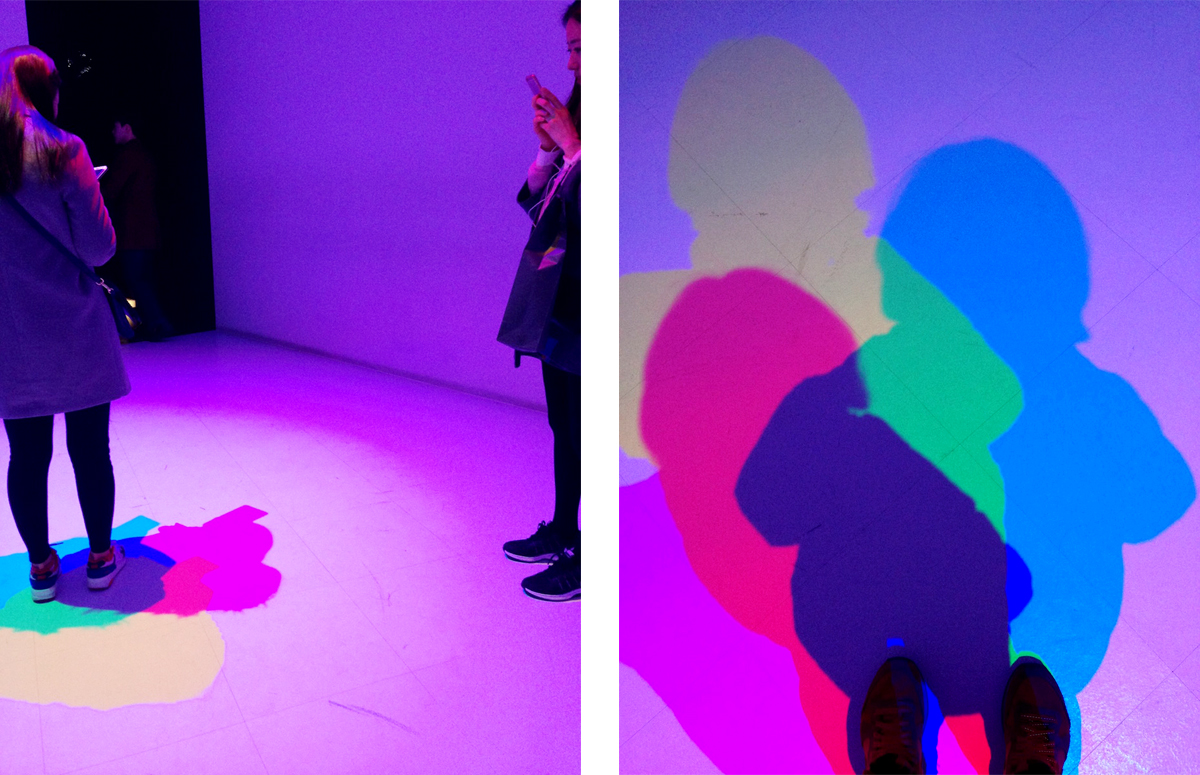I recently visited the newly opened D Museum in Seoul for their inaugural exhibition Spatial Illumination – 9 Lights in 9 Rooms featuring light art by leading international artists. It was the type of exhibition made for Instagram, photogenic and hip, and there seemed to be more interest in taking photos and videos than in the artwork itself.
The initial barrage of shutter sounds from phone cameras stole my attention away from the light pieces—apparently you can’t disable the camera sound on phones in Korea. It was interesting to experience this aural disruption and observe how it impacts my experience as a museum patron. While museums all over the world are being shaped by selfie culture, whether they embrace it like the selfie museum in Manila or ban photos forcing people to smuggle blurry pics for #latergram posts, my experience in the US was mostly one of an occasional obstructed view.
The shareable museum
More and more galleries and museums are opting to showcase “art for Instagram’s sake,” drawing people who may not otherwise visit museums. Some of our museum clients encourage InstaMeets to help promote their more photogenic exhibitions. (As noted in The New Yorker the Guggenheim has gone so far as to hold Instagram-only previews, #EmptyGuggenheim.)
Even though high-quality images of the works in most museum collections can be found online, people still want to have their own personal memento of a visit, whether selfies or photos with and of the pieces. In this new behavior the museum itself has become an extension of the museum store—not just a place to enjoy art or make fond memories but a place to come away with digital souvenirs that one can instantly share with friends and fans.
What is a museum store?
Many people don’t actually differentiate the time spent in the galleries from time in the store.
In fact, Ryan Ross, the Head of Retail for The Store at the Minneapolis Institute of Art explains in an interview that “many people don’t actually differentiate the time spent in the galleries from time in the store” and see it all as time at the museum. This suggests that the museum is turning into the museum store and vice versa. As I read Ryan Ross’ description of how he curates products to connect with the exhibitions and forages for meaningful relationships with artists (here, he means artists/merchants of the museum store items), I realized that the similarities between the gift shop and museum are greater than I had thought.
He indicates that the best part of his job is “connecting with artists and sharing their stories with our visitors”—isn’t that what museums say about their work as well?
Though I don’t feel a need to revisit the 9 room exhibit at D Museum, I would go back to take a second look at their cool store with useful, design-y crafts and other goods. I found a reasonably priced side-sling tote bag with a fun design by a Korean artist. With my purchase, I also received a set of pin-back buttons connecting to the exhibition. The museum store offered a choice of button sets designed for each of the 9 artists featured in the museum; I didn’t like the button design for my preferred light art piece though so I picked another that made for a better souvenir.
Museum promotion and blurring lines
Wearing the tote bag around, I’ve already directed several bag admirers to the museum, having told them I got it at D Museum. I’m sure many more are heading over to get their own snapshots with the light art, having seen the posts on Instagram.
The spectrum of content consumption that once had a vast and clear distinction between museum and museum store is blurring. This is perhaps being forced by the economic reality of museums as they are required to be more competitive and “commercial” and at the same time, by the more general evolution of how we consume art. Museum-goers want to know “the history of the artists, where they’re from, what inspires them, and the source materials” and they want to take a piece of the museum home with them. This is not new. What is new is that not only can they do this at the museum store, they can also do so with their phones. It’s possible that one day in the not-so-distant future the distinction between the museum and the store will just fade away.
Does your museum need an affordable way to improve its brand today?
Because we know that not everyone needs or can afford our full process, we created a guided tutorial package for our foundational brand strategy tool: the Brand Pyramid. Watch the video for a preview.
For more information on this brand strategy tutorial, visit here where you will find a fuller explanation and link to a free download of the first video.
Photos by the author




Ask for help.
We are kind, thorough and ready when you are. You just need to ask.